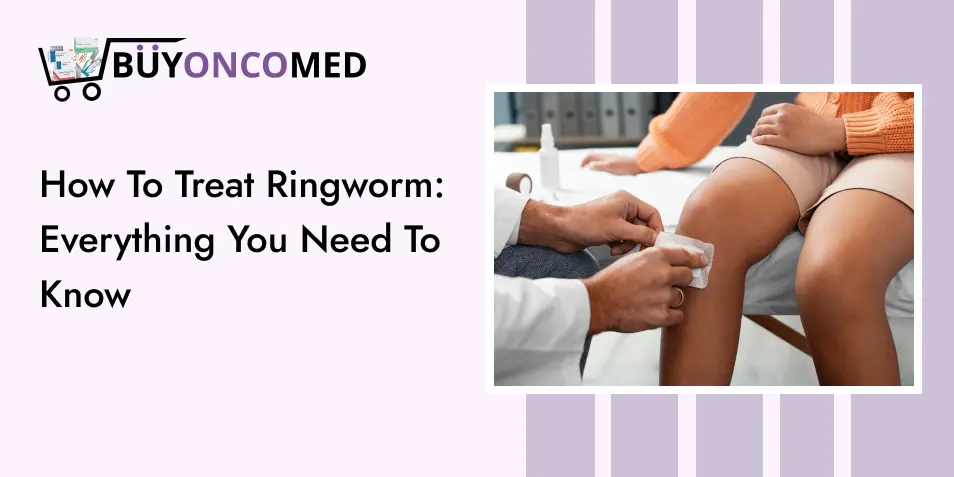
What Is a Ringworm?
Sounding scary, ringworm is simply not as dramatic as its name might suggest. Worms have nothing to do with it; it is a nuisance fungus. These tiny bugs are around your skin, hair, or nails. It thrives in warm, clammy environments, which is why you can find it more in locker rooms or on a sweaty body.
✦ What Causes Ringworm?
The blame can be put on a team of fungi known as dermatophytes. They are devious and get transmitted through dwelling on each other-person to person, from pet to person, or even in things such as clothes and combs. Ringworm can be transferred immediately to you by your dog, cat, or classmate.
✦ Where Can Ringworms Show Up?
Ringworm is a bit of a shape-shifter. It can show up:
- On your body, as a round, itchy rash.
- On your scalp, where it can make hair fall out in little patches.
- On your feet—that’s an athlete’s foot.
- In your groin—you might know it as jock itch.
- On your nails, turn them thick and weird-colored.
✦ Who’s Most Likely To Get Ringworm?
Kids get ringworm a lot, especially if they share stuff at school or play with pets. Athletes and anyone who likes walking barefoot at the gym are also at risk. Pets with bald spots might be the culprits, too.
How Can You Tell If You Have a Ringworm?
Let me discuss the typical symptoms so that you do not need to make guesses.
✦ What Does Ringworm Look Like?
When you see an itchy or scaly rash as red as a circle or a ring, you may be infected with ringworm. The centre of the rash is sometimes clear, so that it resembles a small donut. Should it blister or ooze or simply not go away, then it is time to seek the consultation of a doctor.
✦ How Do Doctors Know For Sure?
Most doctors can spot a ringworm by just looking at it. If they want to be extra sure, they might scrape a bit of skin and peek at it under a microscope. Some use a special light, but that’s less common.
How To Treat Ringworm?
Good news, most cases of ringworm are home-treatable. It can stop in its tracks when you act fast.
✦ Over-The-Counter Creams
You don’t need a prescription for many ringworm creams. Look for these names on the box:
- Clotrimazole
- Terbinafine
- Miconazole
Clean and dry the rash, then put a thin layer of cream over the area. Always go a bit past the edge of the rash. Keep it up for at least two weeks, even after the rash looks better.
✦ Prescription Medicine
Some spots—like your scalp or nails—are stubborn. You’ll probably need a doctor’s help and a stronger antifungal pill. Some names you might hear: terbinafine, itraconazole, griseofulvin, or fluconazole. Pills can take several weeks, but they get deep where creams can’t reach.
✦ Special Cases
- Scalp: Needs a pill, plus sometimes a medicated shampoo.
- Nails: Oral medicine only—creams can’t get through the nail.
- Feet/Groin: Dry thoroughly after showers, and try powders if you sweat a lot.
How To Use Creams And Pills Safely

✦ How To Use Creams The Right Way
- Wash and dry the spot.
- Put on a thin layer of cream.
- Wash your hands after.
- Change socks, underwear, or shirts if they touched the rash.
✦ How Long To Keep Treating
Stick with the cream or medicine as long as the box or your doctor says—even if the rash looks gone. If you stop early, the ringworm could come back even stronger.
✦ When You Need a Doctor
If the rash is spreading, not healing, or it’s on your scalp or nails, don’t wait. Get a doctor’s advice. The same goes for anyone with diabetes or a weak immune system.
How To Stop Ringworm From Spreading?
A few habits can make a big difference.
✦ Clean Skin and Hands
- Shower every day.
- Wash hands after touching pets or the rash.
- Keep skin dry—fungus hates it.
✦ Cleaning Clothes, Towels, and Pet Stuff
- Use hot water for laundry.
- Clean combs, hats, and sports gear.
- If your pet has patchy fur, get them checked by a vet.
✦ Protect Family and Friends
- Don’t share hats, brushes, towels, or clothes.
- Cover rashes with clothing or a bandage.
- Let school, daycare, or team coaches know if needed.
How Long Does It Take To Heal?
In a good cream and with time, most ringworms will clear in 2 to 4 weeks. Infections of nails or the scalp take longer, as much as three months. Be patient and keep the course.
FAQs
1. Can Kids Use Ringworm Cream?
Yes, most creams are safe for kids. If it’s on the scalp or nails, check with a doctor.
2. Is Tea Tree Oil Or Coconut Oil a Good Idea?
They might help a bit, but doctor-approved antifungal creams work best and fastest.
3. What If The Ringworm Keeps Coming Back?
Talk to your doctor. You may need stronger medicine, or your pet might need treatment too.
4. Is Ringworm Still Contagious After I Start Treating It?
Ringworm gets less contagious after a couple of days of treatment, but the rash remains until it’s healed.
What to Do Next?
Don’t let ringworm stress you out. With the right treatment and a few easy habits, you’ll be back to clear, healthy skin soon. Are you not sure what to buy, or is the rash not budging? Contact your doctor or pharmacist—they’ll help you get sorted.

